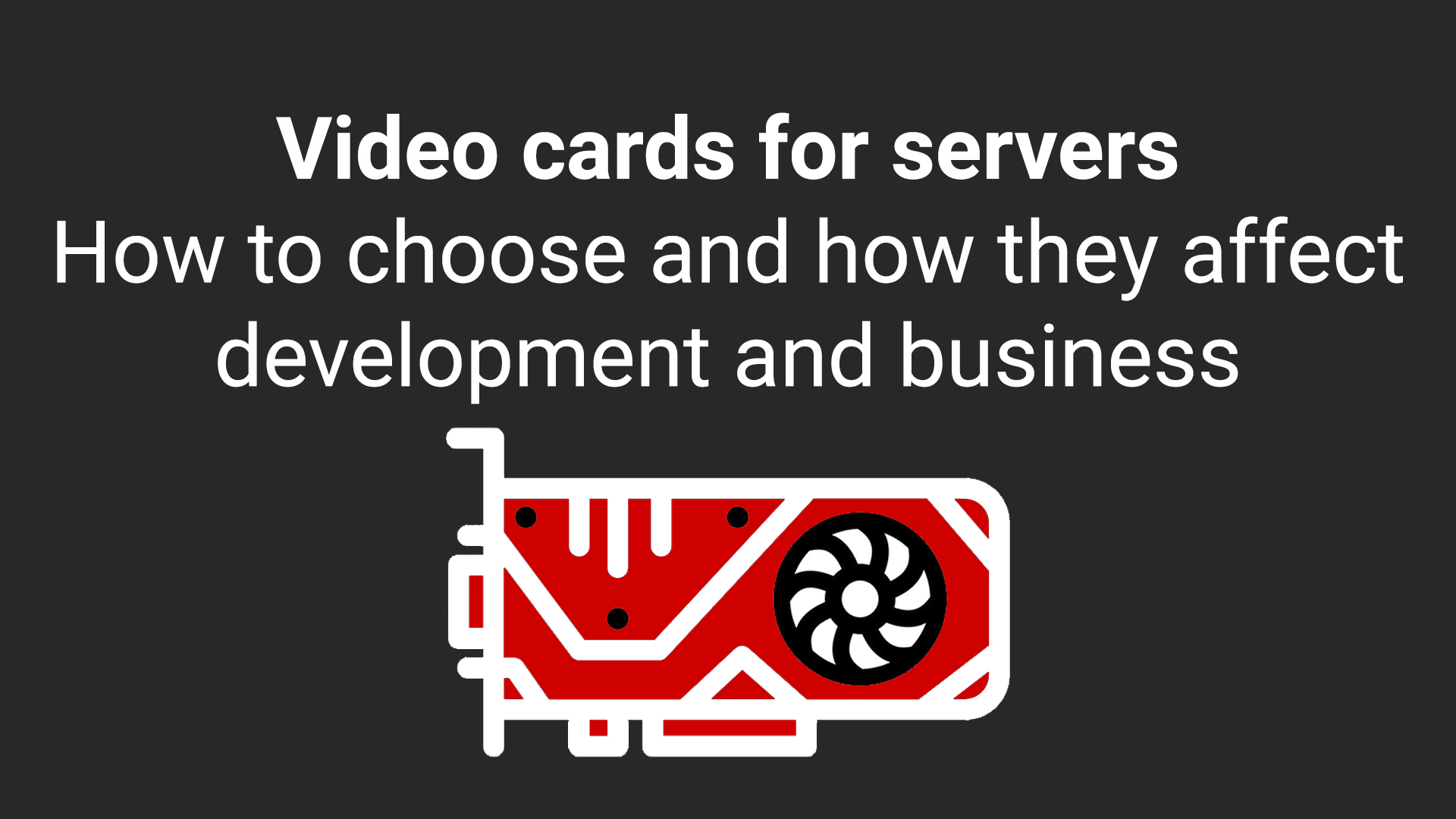Video cards for servers: How to choose and how they affect development and business
- September 23, 2024, 05:49:25

With the development of modern technologies, the role of video cards has grown significantly. Previously, they were used primarily for graphics applications and games, but today video cards (GPUs) have become an important tool for servers, especially in areas such as machine learning, artificial intelligence, video rendering and 3D graphics. In this article, we will look at which video cards are suitable for servers, how they work and how their use can improve development and business.
Video cards for servers: the main types
The video cards used in servers are divided into two main types:
Consumer Graphics Cards (Consumer GPUs): These graphics cards, such as NVIDIA GeForce or AMD Radeon, are widely used for games and tasks that require graphics processing on personal computers. Their main purpose is to provide high—quality graphics and high-performance computing for consumer needs. In some cases, such cards can be used on servers for tasks requiring parallel computing, but their performance and reliability may be inferior to professional solutions.
Professional graphics cards (Professional GPUs): NVIDIA Tesla, Quadro, and AMD Radeon Pro series are designed specifically for servers and high-performance workstations. These GPUs are optimized for intensive computing tasks such as deep learning, data analytics, rendering, and offer the best performance in terms of computing power, stability, and durability.
How do video cards work on servers?
Graphics processing units (GPUs) are used for parallel computing. Unlike central processing units (CPUs), which are designed for sequential computing, GPUs can handle a huge number of calculations simultaneously. This makes video cards ideal for tasks involving large amounts of data and complex mathematical operations such as modeling, machine learning and working with large databases.
When the GPU is integrated into the server infrastructure, it takes over the processing of these parallel tasks, reducing CPU load and improving overall system performance. Servers with video cards are becoming not only a tool for graphics processing, but also a powerful computing platform for various business applications.
Why do users choose servers with GPU?
Using GPU servers is attractive for companies for several reasons:
- High Performance: Server-side graphics cards provide significantly higher performance for computing tasks such as artificial intelligence, deep learning, and data analysis. This speeds up the execution of complex operations and reduces processing time.
- Scalability: Servers with video cards can be easily scaled depending on the load. This allows you to quickly increase the system's capacity without the need for a complete infrastructure upgrade.
- Multitasking Support: Due to the GPU's ability to handle multiple parallel processes, servers with graphics cards are ideal for performing multiple tasks simultaneously. This is especially useful for video rendering, processing large amounts of data, and working with machine learning algorithms.
- Business process optimization: Video cards speed up data processing and graphical information, which makes software development processes more efficient. Developers can test their solutions faster, which reduces the time to bring the product to market.
Business Benefits
Using video cards in servers can offer your business the following advantages:
- Acceleration of development processes: Servers with video cards allow developers to handle complex computing tasks faster and more efficiently. This reduces the time spent on testing and developing software solutions, which is especially important for startups and large IT companies.
- Improving product quality: High-performance graphics cards provide better graphics rendering, which improves the visual perception of end products, whether video content or 3D models.
- Competitive advantage: Video cards allow you to process large amounts of data in a short time, which can become a competitive advantage in the market. Companies using GPU servers can bring their products to market faster by offering higher-quality solutions.
- Resource savings: Servers with graphics cards can process tasks faster and with less energy consumption compared to traditional systems. This can reduce infrastructure costs and make the business more sustainable in the long run.
Which video cards are best suited for servers?
The choice of video card for the server depends on the type of tasks to be performed. Here are some examples of video cards that are often used on servers:
- NVIDIA Tesla: These GPUs are designed for high-performance computing and machine learning. They are capable of processing huge amounts of data and parallel tasks, which makes them ideal for server solutions in the field of AI and data analytics.
- NVIDIA Quadro: These graphics cards are well suited for tasks related to rendering, 3D graphics and complex graphics applications. They are used in professional workstations and servers for graphics processing.
- AMD Radeon Pro: These GPUs are a great choice for video rendering and multimedia content. They provide stable and high performance, which makes them useful for creative studios and video platforms.
Conclusion
Using GPU-powered servers opens up new business and development opportunities. Video cards provide significant acceleration of processes related to large amounts of data, machine learning and rendering. As a result, your business can bring products to market faster, improve the quality of solutions and remain competitive.


